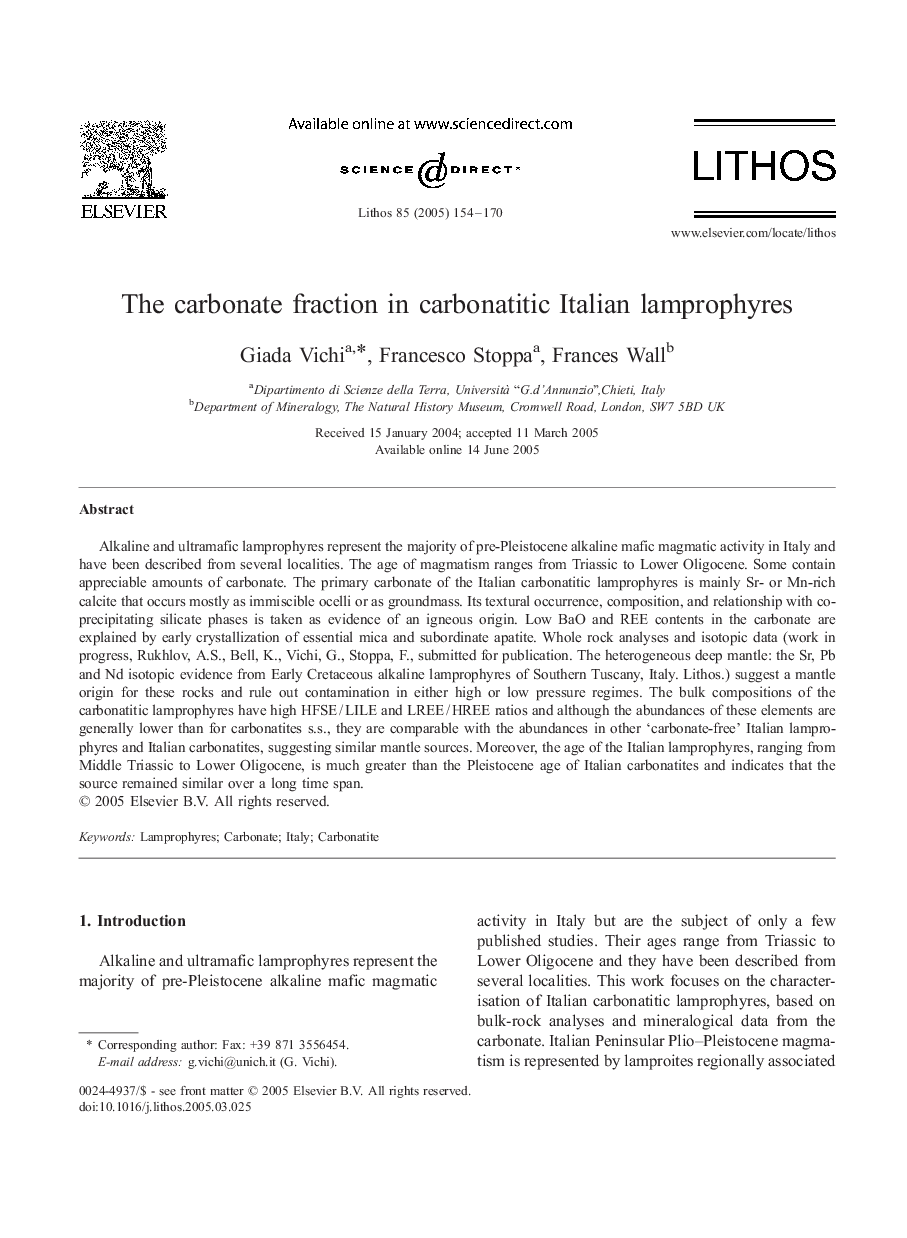| Article ID | Journal | Published Year | Pages | File Type |
|---|---|---|---|---|
| 9531884 | Lithos | 2005 | 17 Pages |
Abstract
Alkaline and ultramafic lamprophyres represent the majority of pre-Pleistocene alkaline mafic magmatic activity in Italy and have been described from several localities. The age of magmatism ranges from Triassic to Lower Oligocene. Some contain appreciable amounts of carbonate. The primary carbonate of the Italian carbonatitic lamprophyres is mainly Sr- or Mn-rich calcite that occurs mostly as immiscible ocelli or as groundmass. Its textural occurrence, composition, and relationship with co-precipitating silicate phases is taken as evidence of an igneous origin. Low BaO and REE contents in the carbonate are explained by early crystallization of essential mica and subordinate apatite. Whole rock analyses and isotopic data (Rukhlov, A.S., Bell, K., Vichi, G., Stoppa, F., submitted for publication. The heterogeneous deep mantle: the Sr, Pb and Nd isotopic evidence from Early Cretaceous alkaline lamprophyres of Southern Tuscany, Italy. Lithos.) suggest a mantle origin for these rocks and rule out contamination in either high or low pressure regimes. The bulk compositions of the carbonatitic lamprophyres have high HFSEÂ /Â LILE and LREEÂ /Â HREE ratios and although the abundances of these elements are generally lower than for carbonatites s.s., they are comparable with the abundances in other 'carbonate-free' Italian lamprophyres and Italian carbonatites, suggesting similar mantle sources. Moreover, the age of the Italian lamprophyres, ranging from Middle Triassic to Lower Oligocene, is much greater than the Pleistocene age of Italian carbonatites and indicates that the source remained similar over a long time span.
Related Topics
Physical Sciences and Engineering
Earth and Planetary Sciences
Geochemistry and Petrology
Authors
Giada Vichi, Francesco Stoppa, Frances Wall,
